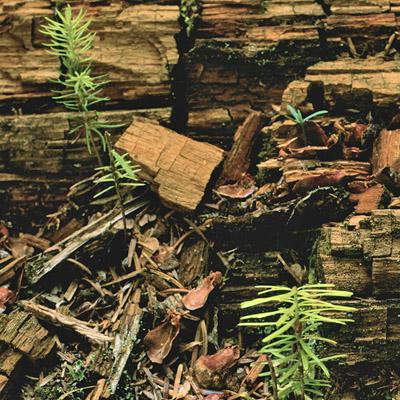Response of Red Spruce and Balsam Fir Seedlings to Growing Season Environmental Stress: The Roles of Growth Habit and Phenotypic Plasticity

Red spruce and balsam fir are principal tree species of conifer forests in the Acadian Region of Maine. Both species regenerate in the understory and grow towards canopy height following a disturbance that provides necessary sunlight, water, and minerals. Although reproductive effort and seedling establishment of the two species are similar, forest inventory data show that fir is becoming more abundant at the expense of spruce. This is of concern to forest industry due to the higher value of spruce for sawlogs.
NSRC researchers compared the response of first- and second-year red spruce and balsam fir seedlings to sudden changes in light environment, as would be experienced following harvest with substantial overstory removal. Seedlings were grown under shade transmitting about 20% of sunlight. In mid-growing season, a group of seedlings were moved to full sunlight to simulate an overstory removal harvest, while a control group remained shaded.
Spruce put more resources into photosynthetic shoots than into roots, which, combined with an ability to continue growth for a longer period, resulted in greater seedling size. Spruce seedlings accumulated over twice as much biomass as fir in year one and nearly ten times as much in year two. In contrast, fir invested a greater proportion of its biomass in root production and photo-protective mechanisms and suffered a smaller decrease in photochemical efficiency when exposed to full light. Under conditions of sufficient but not excessive light, combined with ample soil moisture and high humidity, red spruce can out-grow balsam fir. When resources, particularly water, become limiting or in excessive light environments, fir’s conservative seedling strategy would likely be superior.
Download printable version [PDF]
Download full final report [PDF]
